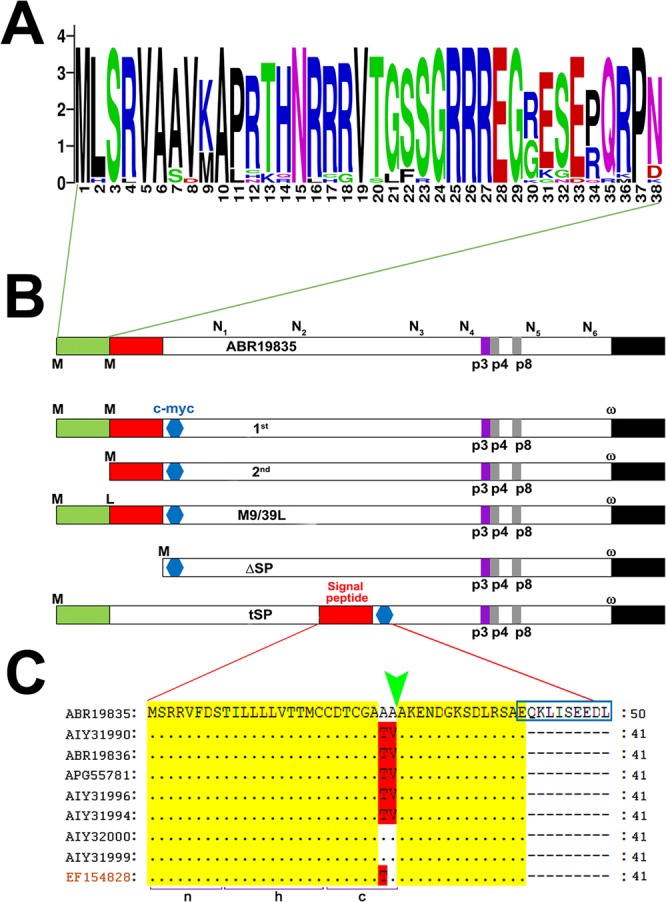Figure 1.

Schematic representation of GP82 constructs. (A) WebLogo representation of multiple sequence alignment (Clustal Omega) of uncharacterized 38 amino acids region from representative members of trans-sialidase family (from Table 1) indicating the relative frequency of amino acids at given position (height). (B) Illustrative representation of protein ABR19835 deduced from the cDNA 5.4G6 (GenBank EF154827) used as template to create the constructs 1st, 2nd, M9/39L, ΔSP and tSP. The N(1–6) depicted above the template protein, indicates putative N-glycosylation sites conserved throughout the constructs. In-frame methionines are indicated by the capital M letter (methionine at position 9 is not depicted). Capital L letter denotes the methionine to leucine substitution (M→L) introduced by site-directed mutagenesis (leucine at position 9 is not depicted) The green box denotes a 38 amino acids uncharacterized region between the 1st and 2nd constructs. The predicted SP is represented as a red box. The blue hexagon indicates the c-myc epitope introduced by PCR. P3, p4 and p8 denote the 3F6 monoclonal antibody epitope (p3), and the GP82 cell-binding sites (p4 and p8) involved in the interaction with the host-cell receptor. The black box symbolizes the GPI-anchor addition C-terminal signal where the ω is the GPI-anchor acceptor amino acid. (C) Alignment of SP of GP82 proteins derived from cDNA sequences (from Table 1) compared with c-myc tagged ABR19835 protein. Only the amino acids residues that differ from ABR19835 protein are identified, identical residues are depicted as dots. Protein accession numbers are indicated on the left. The green arrowhead denotes the predicted cleavage site by signal peptidase, between positions 27 and 28. The c-myc epitope (EQKLISEEDL) insertion site is indicated inside a blue box. Brackets labelled as n, h and c, denote the regions that compose the tripartite structure of GP82 signal peptide. EF154828 correspond to a GP82 pseudogene.
